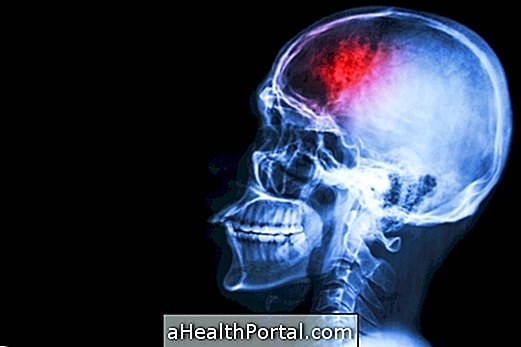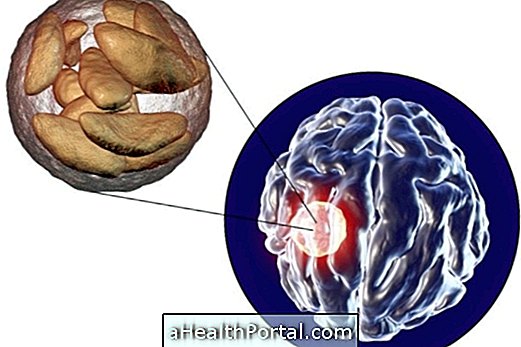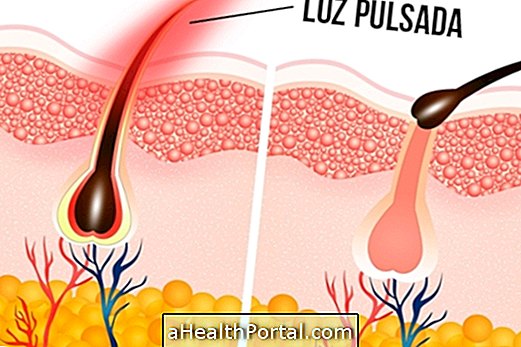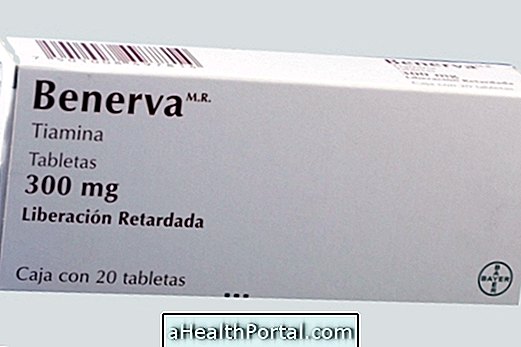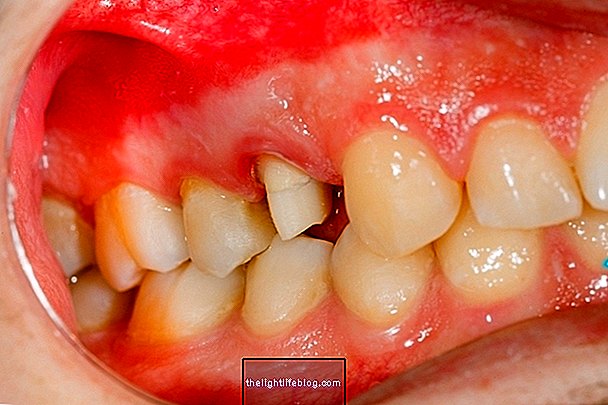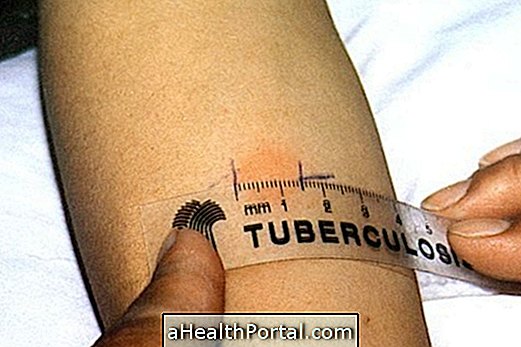The symptoms of trigeminal neuralgia are related to the compression of the trigeminal nerve, which innervates the face and sends the information to the brain.
So, some of the more common symptoms include:
- Severe pain in the face, which usually goes from the corner of the mouth to the angle of the jaw;
- Pain that appears on the face even with light movements, such as touching the face or applying makeup;
- Tingling in the cheeks;
- Feeling of heat in the cheek, in the path of the nerve.
Generally the painful crises caused by trigeminal neuralgia last a few seconds or minutes, but there are more severe cases in which this pain can last for several days, causing much discomfort and despair.
Initially, many people may find that pain crises are being caused by a problem in one or more teeth, but after consulting the dentist, they realize that there is no alteration that justifies the pain.

How to confirm the diagnosis
The diagnosis of trigeminal neuralgia is usually made by the dentist through assessment of the symptoms and location of the pain. However, to screen for other causes such as tooth infection or a fracture in the tooth, diagnostic tests such as an X-ray of the mouth or an MRI, for example, may also be ordered.
What causes neuralgia
In most cases, the pain of trigeminal neuralgia is not always present, appearing by seizures, which can be triggered by daily activities such as:
- To shave;
- Apply makeup;
- Eat;
- Drink;
- Touching the face;
- Brushing teeth;
- Smile;
- Wash the face.
However, crises may not always arise with the same activity, nor arise at all times that something is done that previously led to the onset of a crisis.
What causes trigeminal neuralgia
Neuralgia is usually caused by increased pressure on the trigeminal nerve that innervates the face. The most common is that the pressure is caused by a blood vessel that ends up moving slightly and resting on the nerve.
However, this problem can also happen in people with brain injuries or autoimmune diseases that affect the nerves, such as multiple sclerosis, where the myelin sheath of the trigeminal nerve will wear out, causing nerve malfunction.
Treatment of trigeminal neuralgia
The treatment of trigeminal neuralgia can be done at home with anticonvulsant drugs, analgesics or antidepressants to reduce pain, prescribed by the doctor.
In more severe cases, patients may need physical therapy or even surgery to block nerve function.
To relieve the symptoms of trigeminal neuralgia you can apply a towel dipped in warm water and Epsom salt on the back of the neck, relieving nerve irritation. Understand better the treatment options for trigeminal neuralgia.




